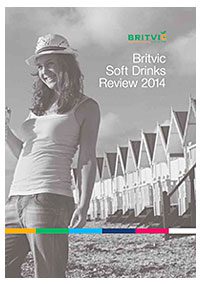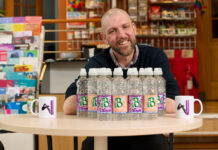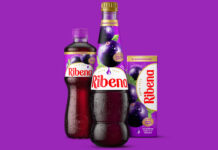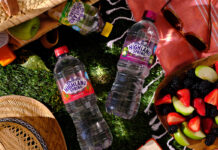AT first glance it looked as if it was good news. Britvic’s Soft Drinks Review for 2014, the latest in a long line of annual in-depth reports on the health of soft drinks sales in the UK, paints a positive picture.

But there’s an almighty sting in the tail. For although the report shows growth in value of soft drinks sales in convenience outlets at 5.4%, well ahead of the 3.4% value increase registered by the supermarkets, the increase was hugely dominated by the multiples’ own c-store sized shops.
Multiple c-stores’ soft drinks sales were said to be up 7.4%.
While the value of sales through independents actually registered a fall of 0.8%.
Now, a number of things have to be taken into account.
The Review doesn’t actually define an independent store. It doesn’t say for example how co-ops and multiple symbol stores owned by wholesalers are considered.
The multiples are opening c-store-sized shops at a fair rate of knots so will be adding sales in that way, we’re not exactly talking like for like.
And of course a number of independents will have closed over the period.
But the underlying message is clear – the Tesco Expresses, Sainsbury’s Locals and similar stores are grabbing a major share of soft drinks sales – business which has been buoyant, and critical to independent and symbol stores, for some considerable time.
As we reported in the last issue of Scottish Grocer, the overall message of the 2014 Review was upbeat.
The first decent summer for many years, slight improvements in consumer confidence, and a tendency among many consumers to trade up, saw the overall (on and off-trade) soft drinks market top £10bn for the first time.
The 2014 edition of the Britvic Soft Drinks Review put total combined sales at £10.3bn.
Almost three-quarters of that sales value was achieved in retail, with the remainder sold through pubs, clubs, restaurants, fast food outlets, hotels, cinemas, football stadiums and the like.
Of total retail sales around three-quarters went through supermarkets and a quarter through convenience outlets.
Convenience (albeit largely multiple convenience outlets) is showing the faster growth though. That’s something Britvic puts down to shoppers buying drinks for immediate consumption, or as part of a top-up shop.
Water had a great year, overall – helped by the good summer.
However, most of the reported 13% value growth came from supermarkets, where consumers appeared to be buying to build stocks in their homes in anticipation of hot weather. Flavoured waters were up 8%.
Energy drinks continued to impress, up by 7% in the impulse channel. Lucozade and Red Bull remained the dominant brands while Monster and Mountain Dew grew ahead of the category as a whole.
Increased demand saw Rockstar move up 84% by value and 90% by volume, the Review reported.
Volume growth in pure fruit juices was said to have been negatively affected by the rising cost of raw materials. Within the convenience channel sales of pure juices dipped. Shoppers were said to have viewed fruit juice as pricier than other drinks.
However some specialist brands that carry health messages are said to have bucked that trend.
Vita Coco coconut water saw its value rise by 125%. Premium brand Copella and Innocent’s juices also did well, said Britvic.
But Innocent’s smoothie range struggled and the smoothie category overall declined by 4%.
Juice drinks, thought to be perceived by consumers as better value for money than pure fruit juices, grew by 12% overall and by 15% in the convenience sector. Britvic put the growth down to customers buying drinks for lunches and breakfasts on the go.
The rise of double-concentrate squashes, such as Robinsons, led to a decline in volume sales in squashes. However, new smaller sizes, such as Robinsons 500ml, were said to have performed well in convenience outlets.
“Cold hot drinks”, such as iced tea and coffee, were up 43% (from a low base). Lipton Ice Tea and the Starbucks range were the biggest names. Niche brand Jimmy’s Coffee grew 305% by value and 286% by volume
In convenience outlets , or ‘total impulse’ as the channel is named in the Review, Cola remained by far the largest sub-category by volume. Non-supermarket shops sold some 314m litres of cola in the 12 months an increase of 3.2% on the preceding year.
However, energy drinks, or “glucose stimulant drinks” as they are called in the Review proved to be the star performers once again. Volume sales of energy drinks rose by 9.2%.
And in value terms energy drinks strengthened their position. With sales through impulse stores worth £491m the drinks take 26.2% of total soft drinks value in impulse, which means it’s now further ahead than it was last year of cola, which has a 24.1% share with sales of £453m.
It’s interesting to note, however, that the value of energy drink sales rose more slowly than volume sales. That suggests own-label and value brands and perhaps deals, promotions and PMPs on big brands of energy products had depressed revenue per can.
While “cold hot” drinks such as iced tea did show considerable percentage growth in convenience stores, the overall numbers (£12.1m and 4m litres) are still small.
But in convenience outlets both plain water, which saw value sales jump 12.6% to £157m and juice drinks which saw sales rise 15.3% to £166.5m, had very good years.
“While the majority of consumers remained cash conscious and careful with their spending, brands remained important,” the Review stated. “There was a new willingness to spend on higher price-point items, giving rise to the trend for premiumisation,” it said.
However value for money remained crucial, with what the report authors called “savvy shoppers” appreciating price-marked packs and promotions.
In response, manufacturers developed different take-home, multi-pack and impulse formats. For example, Britvic added a fridge pack to the J2O range: CCE launched six slimline 250ml cans of Coke, designed for in-home socialising. Vimto added a 250ml bottle.
As an interesting development the Review mentioned Coca-Cola Enterprises’ launch of name-personalised bottles. And it also noted a continuing interest in adventurous flavours such as Red Bull’s Cranberry, Lime and Blueberry flavours.
Much NPD had been focused on cutting sugar and calories, it said. CCE introduced natural, low-calorie sweetener stevia to Sprite in March and PepsiCo launched Trop 50, a low-calorie blend of not-from-concentrate juice and water also sweetened with stevia.
Red Bull Sugar-free was supported by a £2m marketing push while Britvic introduced what it said was a first, Mountain Dew Sugar-Free, the first sugar-free energy drink in a PET pack.
[hr]
£7.5bn Value of UK soft drinks sales in multiple grocers and convenience 52 weeks to 28 December 2013
£2.7bn Value of UK soft drinks sales in convenience outlets 52 weeks to 28 December 2013
£0.43bn Value of UK soft drinks sales in independent convenience outlets 52 weeks to 28 December 2013
£1.5bn Value of UK soft drinks sales in multiple convenience outlets 52 weeks to 28 December 2013
3.9% Growth in value of UK soft drinks sales in multiple grocers and convenience 52 weeks to 28 December 2013
5.4% Growth in value of UK soft drinks sales in convenience outlets 52 weeks to 28 December 2013
-0.8% Growth in value of UK soft drinks sales in independent convenience outlets 52 weeks to 28 December 2013
7.4% Growth in value of UK soft drinks sales in multiple convenience outlets 52 weeks to 28 December 2013
15.3% Growth in value of UK juice drinks sales in convenience outlets 52 weeks to 28 December 2013
12.6% Growth in value of UK plain water sales in convenience outlets 52 weeks to 28 December 2013


















